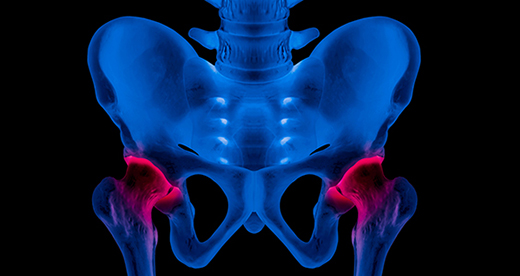
When BONEZONE last spoke with John Lucey, M.D., at the beginning of 2018, the retired orthopedic surgeon had recently launched the startup Synergistic Biosensors with the lofty goal of developing implantable sensors with the ability to detect micronic shifts in orthopedic devices. With microns measuring at a mere 0.125”, the loosening of joint components at that level might appear inconsequential, but it can be a harbinger of significant issues for orthopedic device recipients. Under the new company name of OrthoDX, Dr. Lucey hopes the system of miniaturized sensor implants that his company is developing will soon be able to detect micronic joint replacement implant shifts in human patients. Dr. Lucey and Paul Vo, OrthoDX’s Chief Technology Officer, spoke with BONEZONE about the progress that the company has made over the last two years.
How has your wireless sensor technology evolved over the last two years?
Dr. Lucey: We now have a functioning prototype that shows we can gauge the micro-motion of conductive implants to within 20 microns. A sensor placed externally to the prosthesis can communicate with it and send that data to a transceiver. We’re at a stage where a lot has been achieved, but I realize that to continue, a whole lot more has to be undertaken. For example, we need to be able to encase our sensor in a biologically inert material, and have that encapsulated sensor be seated solidly into bone. That’s our next step, developing the coating and the anchorage for our sensor. Beyond that, we need to perform animal testing and have preliminary discussions with FDA about the project.
When we last spoke, you said miniaturizing your sensors was your next big hurdle. How has that progressed?
Dr. Lucey: Presently, the sensor’s size is suitable for joint replacement surgery. Our intramedullary sensor is 10mm in diameter, and that accommodates the average femoral intramedullary canal. We have prospects of making that even smaller, but that depends on how close the sensor is placed to the prosthesis.
Mr. Vo: In the creation of the prototype, I greatly simplified what was to be in the sensor, which relieved the difficulty of miniaturization considerably. The size of the sensor we have now can be deployed as-is.
You recently published an Institute of Electrical and Electronics Engineers (IEEE) paper. What findings are important for industry to know?
Mr. Vo: The paper announces that we have science behind what we’re doing in a credible way, and shares that science. Someone in the industry who might be interested in what we’re doing can be brought up to speed scientifically by studying the paper. It’s the overall credibility of the fact that we have published research, and that helps bring an understanding of how our technology works.
Throughout our conversations, you’ve mentioned that this is not going to be a short process. What are the next steps for OrthoDx?
Dr. Lucey: Developing the encapsulation of the sensor with a biologically inert material and securing it to bone. I have been in discussion with colleagues who feel they could develop this within six months, once they’re given the green light. The same goes for animal studies. Of course, we need to discuss it with FDA, but it shouldn’t take long to get the preliminary nod. One of the other areas of discovery that we have yet to achieve is the three-dimensional positioning of the prosthesis. We’re presently able to determine motion in the Y axis, the up and down axis of the femoral component. But we need to refine our technology so we can monitor not only the Y axis, but also the X and Z axes to determine motion in all three planes.
Mr. Vo: We want to make sure that there is no possible motion of the prosthesis that our sensor wouldn’t measure. That means employing additional sensors in other places. Here is where further miniaturization comes in, because those other locations are such that it would be possible to position the sensor much more closely and precisely than the sensor placed at the bottom of the femoral canal. It’s doable, but we have to expand our technology. A lot of work remains, but I don’t see fundamental problems to be solved like there were with developing the basic technology.
How far are you from commercialization?
Mr. Vo: The part with the most question marks has been taken care of. We can show with good certainty that the technology is viable, but it’s a prototype. We’re a long way from having a nice, slick product that can be used in a clinical situation. A lot of design work remains, and FDA approval, and getting us on certain purchasing lists and agreements. However, it’s no different than what any other medical device has to go through.
PM
Patrick McGuire is a BONEZONE Contributor.




